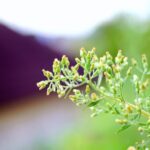Transforming a dry and arid landscape into a beautiful and thriving outdoor space is possible with the right landscaping ideas for dry areas. Whether you live in a region with limited water supply or simply want to create a low-maintenance garden, understanding how to design and maintain a dry area landscape is essential. In this article, we will explore various landscaping strategies and tips for creating stunning outdoor spaces in dry areas.
Dry area landscaping presents unique challenges that require careful consideration and planning. From selecting drought-tolerant plants to creating water-efficient irrigation systems, there are several factors to take into account when designing a landscape in a dry environment. By exploring the principles of xeriscaping and incorporating hardscape elements, it’s possible to create an attractive and sustainable outdoor space that thrives even in the absence of regular rainfall.
In addition to discussing practical tips for landscaping in dry areas, we will also delve into inspiring case studies that showcase the beauty and potential of drought-resistant gardens. From utilizing rocks and gravel for low-maintenance landscaping to implementing maintenance tips specifically tailored for dry area landscapes, this article aims to provide comprehensive insights for creating captivating outdoor spaces in water-constrained environments.
Understanding the Challenges of Dry Area Landscaping
Landscaping in dry areas presents a unique set of challenges for homeowners and property managers. The lack of sufficient water supply, high temperatures, and poor soil quality can make it difficult to maintain a lush and vibrant outdoor space.
However, with the right knowledge and strategies, it is possible to create a beautiful and sustainable landscape even in arid regions. In this section, we will explore some of the key challenges associated with dry area landscaping and provide helpful tips for overcoming them.
One of the main challenges of landscaping in dry areas is finding plants that can thrive in these harsh conditions. Many traditional landscaping plants require a significant amount of water to survive, which is not practical in dry regions.
However, there are plenty of drought-tolerant plant options available that can add color and texture to your landscape without requiring excessive watering. By carefully selecting the right plant species, you can create a stunning garden that can withstand periods of drought and extreme heat.
In addition to plant selection, another challenge in dry area landscaping is designing an efficient irrigation system. Traditional sprinkler systems may not be suitable for arid environments due to water wastage and inefficiency. Therefore, it is essential to explore alternative methods such as drip irrigation or soaker hoses that deliver water directly to the root zone of plants.
This approach not only conserves water but also promotes healthier plant growth by minimizing moisture loss through evaporation. By addressing these challenges creatively, you can create a thriving landscape that enhances the natural beauty of your property while conserving precious water resources.
| Challenges | Solutions |
|---|---|
| Finding drought-tolerant plants | Carefully select plant species that can thrive with minimal water |
| Designing an efficient irrigation system | Explore drip irrigation or soaker hoses to conserve water and promote healthy plant growth |
Selecting Drought-Tolerant Plants
When it comes to landscaping in dry areas, one of the most crucial considerations is choosing plants that can thrive in these conditions. Drought-tolerant plants are essential for creating a sustainable and visually appealing landscape that can withstand the challenges of limited water resources. These plants have adapted to survive with minimal water, making them an ideal choice for arid regions or areas prone to drought.
There are numerous options available when it comes to selecting drought-tolerant plants for landscaping in dry areas. Succulents, such as agave and aloe, are popular choices due to their ability to store water in their leaves and stems.
Native grasses like buffalo grass and blue grama are also excellent options, as they have evolved to survive in harsh climates with little water. Additionally, Mediterranean herbs like lavender and rosemary are known for their drought resistance and aromatic qualities, making them both practical and visually appealing additions to a dry area landscape.
Incorporating a variety of drought-tolerant plants into your landscaping design not only ensures resilience against dry conditions but also allows for an array of textures, colors, and shapes that can enhance the overall aesthetic of the outdoor space. By carefully selecting these plants based on their ability to thrive with minimal water, you can create an attractive and sustainable landscape that reflects the natural beauty of the environment while conserving precious resources.
By incorporating a diverse selection of drought-tolerant plants into your landscaping design, you can create a beautiful and sustainable outdoor space that thrives in dry conditions without requiring excessive watering. When selecting these plants, be mindful of their specific water needs and growth habits to ensure that they will not only survive but also flourish in your particular dry area landscape.
With careful planning and consideration, you can create a visually stunning outdoor environment that embraces the beauty of nature while minimizing water usage.
Creating a Water-Efficient Irrigation System
When it comes to landscaping ideas for dry areas, creating a water-efficient irrigation system is crucial for the sustainability of the landscape. In this section, we will discuss various methods and techniques for designing an irrigation system that minimizes water usage while keeping the landscape healthy and thriving.
Drip Irrigation Systems
Drip irrigation systems are one of the most efficient methods for watering plants in dry areas. This system delivers water directly to the root zone of plants, minimizing evaporation and ensuring that water is used more effectively. By installing a drip irrigation system, homeowners can reduce water waste and promote the health of their landscaping in arid or drought-prone regions.
Smart Irrigation Controllers
Utilizing smart irrigation controllers can also contribute to water efficiency in dry area landscapes. These devices use weather data, soil moisture levels, and plant water requirements to adjust watering schedules accordingly. By incorporating technology into the irrigation system, homeowners can optimize water usage and avoid overwatering or underwatering their plants.
Rainwater Harvesting
Incorporating rainwater harvesting techniques into the irrigation system is another sustainable approach to watering dry area landscapes. Collecting rainwater from rooftops or other surfaces allows homeowners to store and utilize natural precipitation for watering plants during drier periods. This not only reduces reliance on municipal water sources but also promotes self-sufficiency in maintaining a beautiful landscape in arid conditions.
These strategies for creating a water-efficient irrigation system are essential components of successful landscaping ideas for dry areas. By implementing these methods, homeowners can ensure that their landscapes remain vibrant and healthy while minimizing water consumption and promoting environmental sustainability.
Hardscape Design for Dry Landscapes
Choosing the Right Materials
When it comes to hardscaping in dry landscapes, it’s crucial to select materials that can withstand the harsh conditions. Opt for materials like sandstone, flagstone, and concrete pavers, which are not only durable but also complement the natural look of a xeriscape. These materials work well for pathways, patios, and retaining walls, adding visual interest to the landscape without requiring much water.
Creating Functional Outdoor Spaces
One of the key elements of hardscape design in dry areas is to create functional outdoor spaces that serve a purpose while conserving water. Consider incorporating features such as fire pits or outdoor kitchens into your landscape design. By using these spaces for entertaining and relaxing, you can make the most of your outdoor area without relying on high levels of irrigation.
Embracing Sustainable Design
Incorporating sustainable hardscape design practices can further enhance the beauty and functionality of dry landscapes. This may include installing permeable paving options that allow rainwater to penetrate through the surface and replenish groundwater supplies. Additionally, consider creating shaded areas with pergolas or arbors to reduce heat in outdoor living spaces and provide relief during hot weather. By embracing these sustainable hardscaping techniques, you can achieve an eco-friendly and visually appealing landscape even in a dry environment.
Incorporating Xeriscaping Principles
Xeriscaping is a landscaping approach that focuses on creating a beautiful and sustainable outdoor space in dry and arid areas. By incorporating xeriscaping principles into your landscaping design, you can conserve water, reduce maintenance needs, and create a visually appealing environment that thrives in drought conditions.
One of the key principles of xeriscaping is soil improvement. By cultivating healthy soil with good drainage, you can ensure that plants are able to access the water they need without becoming waterlogged. Additionally, adding organic matter to the soil can help retain moisture and reduce the need for additional watering.
Another important aspect of xeriscaping is selecting drought-resistant plants that are well-suited to the local climate. Native plants are often an excellent choice for xeriscaping, as they have adapted to thrive in specific environmental conditions. Succulents, ornamental grasses, and wildflowers are popular choices for dry area landscaping due to their ability to withstand limited water resources.
Implementing efficient irrigation methods is also a fundamental component of xeriscaping. Drip irrigation systems, soaker hoses, and rainwater harvesting techniques can all be utilized to provide plants with necessary moisture while minimizing water waste. By strategically placing irrigation systems and utilizing smart watering practices, you can further enhance the sustainability of your landscape design.
| Xeriscaping Principle | Key Considerations |
|---|---|
| Soil Improvement | Cultivate healthy soil with good drainage; add organic matter for moisture retention |
| Drought-Resistant Plants | Select native plants, succulents, ornamental grasses, and wildflowers for dry area landscapes |
| Efficient Irrigation Methods | Utilize drip irrigation systems, soaker hoses, and rainwater harvesting techniques for sustainable watering |
Utilizing Rocks and Gravel for Low-Maintenance Landscaping
For low-maintenance landscaping in dry areas, utilizing rocks and gravel can be an effective and visually appealing solution. By incorporating these elements into your landscape design, you can create a beautiful and sustainable outdoor space that requires minimal upkeep. Rocks and gravel not only add texture and contrast to the landscape but also help with water conservation and weed control.
Here are some ways to incorporate rocks and gravel into your dry area landscaping:
- Create a rock garden: Designate an area of your yard for a rock garden, using various sizes and shapes of rocks to add visual interest. Plant drought-tolerant succulents or cacti among the rocks for a striking display.
- Install pathways: Use gravel or crushed stone to create pathways throughout your landscape. This not only adds functionality but also reduces the need for watering and maintenance in these areas.
- Implement dry riverbeds: Mimic the look of a natural riverbed by using rocks and gravel to create a dry streambed in your yard. This feature helps with drainage and adds a unique focal point to the landscape.
In addition to these ideas, consider incorporating boulders, pebbles, or decorative rock mulch into your design to further enhance the aesthetic appeal of your low-maintenance landscape. By utilizing rocks and gravel strategically, you can achieve a beautiful and sustainable outdoor space in dry areas while minimizing maintenance requirements.
Maintenance Tips for Dry Area Landscapes
When it comes to maintaining a dry area landscape, there are certain tips and strategies that can help ensure the longevity and health of your outdoor space. Here are some maintenance tips to consider:
1. Efficient Watering: In dry areas, it’s crucial to water plants and trees efficiently. Consider using a drip irrigation system that delivers water directly to the roots of plants, minimizing evaporation and water waste. Additionally, watering in the early morning or late evening can also help reduce evaporation.
2. Mulching: Applying mulch around plant beds can help retain moisture in the soil, reduce weed growth, and provide insulation for plant roots during extreme temperatures. Organic mulch such as wood chips or bark can also improve soil quality as it decomposes.
3. Pruning and Trimming: Regular pruning and trimming of plants and trees can help promote healthy growth and minimize water requirements. Removing dead or overgrown branches allows for better airflow and sunlight penetration, which is essential for plant health in dry climates.
4. Soil Maintenance: Testing the soil for nutrient levels and pH balance can help determine if any amendments are needed to improve its quality. Adding organic matter such as compost can enhance the soil structure and its ability to retain moisture.
5. Pest and Weed Control: Keeping an eye out for pests and weeds is important in maintaining a healthy dry area landscape. Using natural pest control methods and regularly removing weeds can prevent them from competing with plants for water and nutrients.
By incorporating these maintenance tips into your landscaping routine, you can ensure that your dry area landscape remains vibrant, sustainable, and visually appealing throughout the year.
Inspiring Dry Area Landscaping Case Studies
Dry area landscaping can be a challenge, but with the right knowledge and techniques, it is possible to create a visually stunning and sustainable landscape. One great way to gather inspiration for your dry area landscaping project is to explore some case studies of successful dry area landscapes. These examples not only showcase the beauty of drought-tolerant plants and water-efficient designs but also provide valuable insight into how to overcome the challenges of landscaping in arid environments.
One inspiring case study of dry area landscaping is the Desert Botanical Garden in Phoenix, Arizona. This 140-acre garden is home to thousands of species of cacti, succulents, and other drought-tolerant plants, all thriving in the harsh desert climate.
The garden’s landscape design incorporates native plants, rock formations, and hardscape elements to create an aesthetically pleasing environment that requires minimal water usage. Visiting this botanical garden can offer valuable ideas for selecting suitable plants and designing a hardscape for a dry area landscape.
Another noteworthy case study is the Ruth Bancroft Garden in Walnut Creek, California. This garden showcases a diverse collection of drought-resistant plants from around the world, arranged in beautiful and creative ways that highlight their unique characteristics.
The use of rocks, gravel pathways, and mulch not only adds texture and visual interest but also contributes to water conservation by reducing evaporation from the soil. Exploring this garden can provide insights into creating a xeriscape design that balances aesthetics with environmental sustainability.
In addition to these specific case studies, there are numerous public parks, private residences, and commercial properties that have successfully implemented landscaping ideas for dry areas. By studying these real-world examples, homeowners and landscapers can gain valuable knowledge on plant selection, irrigation strategies, hardscaping techniques, and maintenance practices that are essential for creating thriving landscapes in arid regions.
Conclusion
In conclusion, landscaping in dry areas presents its own set of challenges, but with the right approach, it can also result in stunning and environmentally friendly outdoor spaces. By understanding the unique requirements of dry area landscaping and selecting drought-tolerant plants, homeowners can create beautiful gardens that thrive in arid conditions. Incorporating xeriscaping principles and utilizing rocks and gravel for low-maintenance landscaping are effective strategies for conserving water and reducing maintenance needs.
Creating a water-efficient irrigation system is crucial for sustaining plant life in dry areas. Homeowners can explore drip irrigation systems or smart watering technologies to optimize water usage and minimize waste. Additionally, hardscape designs such as pathways, patios, and retaining walls contribute to the overall aesthetics of dry landscapes while minimizing the need for regular watering and maintenance.
To truly embrace the beauty of dry area landscaping, it’s essential to look for inspiration from successful case studies that demonstrate how stunning and sustainable outdoor spaces can be achieved in arid environments. By implementing the right landscaping ideas for dry areas, homeowners can create visually captivating landscapes that require minimal water consumption and maintenance efforts, ultimately contributing to a more sustainable approach to outdoor living.
Frequently Asked Questions
What Is a Type of Landscape That Needs Very Little Water?
One type of landscape that needs very little water is a xeriscape. This type of landscaping focuses on using native, drought-tolerant plants and minimizing the need for irrigation. By choosing plants that are naturally adapted to the local climate, less water is required to maintain the landscape.
How Do You Landscape Without Water?
Landscaping without water can be achieved by utilizing xeriscaping techniques, such as planting native drought-resistant plants, installing efficient irrigation systems like drip irrigation, using mulch to retain soil moisture, and incorporating hardscapes like gravel or rocks.
Additionally, reducing the size of lawns and increasing the use of low-water-use plants can also help in landscaping without relying heavily on water.
How Do You Make a Drought Resistant Yard?
Creating a drought-resistant yard involves selecting plants that are well-suited to the local climate, soil conditions, and available sunlight. It’s important to group together plants with similar water needs and create separate zones within the yard for different watering requirements.
Proper soil preparation, adding organic matter to improve soil structure and water retention, and applying mulch can also contribute to making a yard more resistant to drought conditions. Additionally, regular maintenance such as proper pruning and monitoring for pests and diseases can help keep a yard resilient during dry periods.

Welcome to my gardening blog! I am passionate about plants and enjoy sharing my knowledge and experiences with others. In this blog, I will write about everything related to gardening, from tips on how to get started to updates on my own garden projects.





